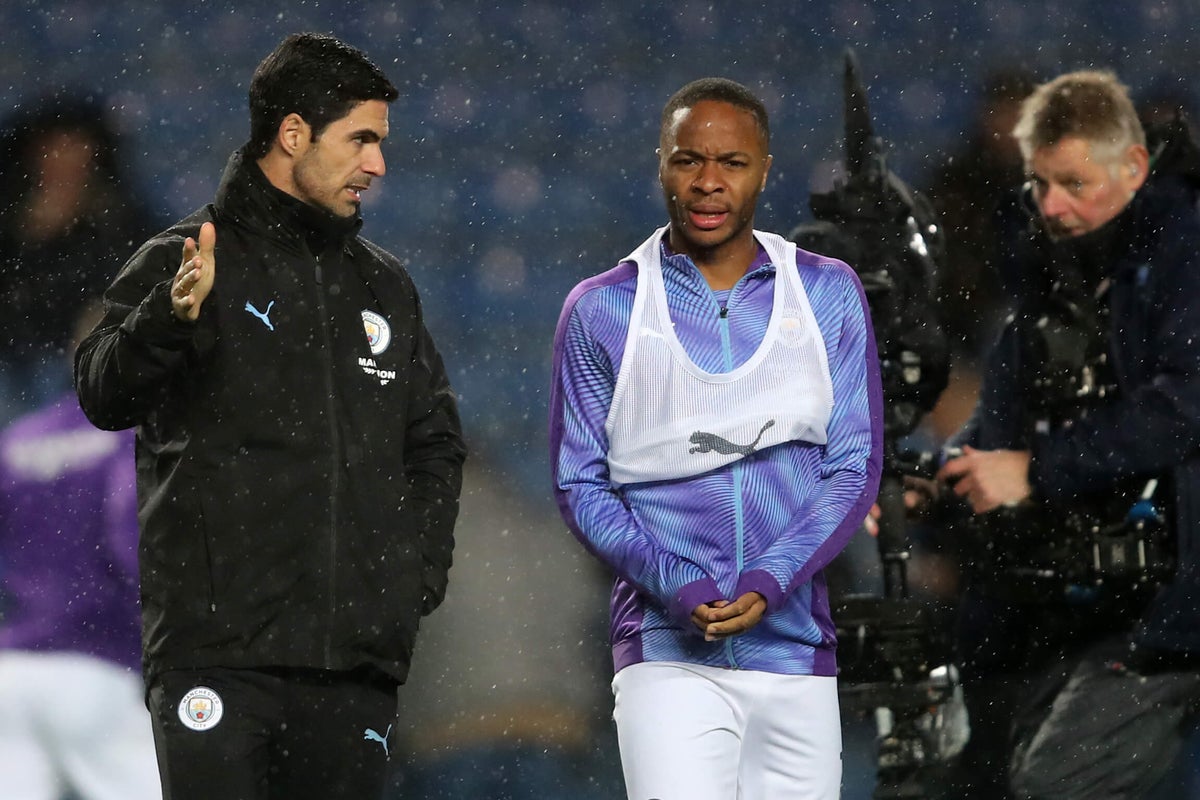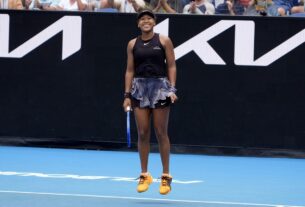It is the training drill that helped transform Raheem Sterling from a zippy winger who narrowly reached double figures each season into a back-post assassin who was among the most lethal goalscoring wingers in Europe.
The change happened in the 2017-18 season, Pep Guardiola’s second in charge of Manchester City, the club Sterling returns to face this Sunday as an Arsenal player.
It is Sterling’s current manager, Mikel Arteta, Guardiola’s assistant from 2016 until 2019 when he left for the Emirates, who played a key role in extracting that staggering efficiency in front of goal.
Guardiola had assistants more senior than Arteta, who was in his first coaching role, so he had the bandwidth to focus on specialisms and learn from as many departments as he could.

GO DEEPER
Mikel Arteta: The Manchester City years
He kept finding himself gravitating to analysis, with his inquisitiveness leading down many a rabbit hole. His thirst to understand specific moments in the game on a granular level helped focus the work of Arteta and the analyst team but it also saw their research become part of the first-team decision-making process.
There were several projects they worked on which produced dramatic improvements: goalkeeper penalty tactics, the diagonal full-back-to-winger pass that Ben White and Bukayo Saka have perfected, and quantifying what made a penalty-box predator.

GO DEEPER
How Arsenal used White to unlock the attacking abilities of Saka and Odegaard
Arteta started looking at wingers around the world, searching for the sweet spot with the use of data. He and the analyst team broke it down into which area these wingers scored most often from, how many touches they took and how quickly a shot had to be taken.
The higher the level, the less time and space players have to shoot. There were also zones identified where most goals are assisted and scored.
From that, a drill was deduced in the academy which Arteta modified and introduced into the first-team environment for Sterling to work on.

Arteta modified a training drill at City to help improve Sterling as a winger (Julian Finney/Getty Images)
Guardiola’s fitness coach Lorenzo Buenaventura is credited with ensuring City train the way they play by making sessions game-realistic. Again, the club’s research informed their thinking as they found fast breaks required far longer sprints than would usually be associated with counter-attack training, so Buenaventura implemented a 60-yard sprint at the start of the exercise.
Sterling then had to shoot inside a marked square under pressure from defenders but the sprint meant that, by the time they got there, they had a lack of oxygen in the brain, which makes decision-making more difficult.
Arteta carried a stopwatch during the drill and if the shot was not taken in the allotted time, he called it dead and they would start over. The emphasis was on the need to act decisively, not to overcomplicate, which is what those privy to Sterling’s evolution at City believe was the key lesson he learned.
With little time to train due to the relentless schedule, these sessions after training were important in hammering home the message. Video work helped, too, with clips of wingers such as Arjen Robben and Franck Ribery, whom Guardiola worked with at Bayern Munich, used in combination with the 16 cameras at the training ground to show exactly what they were looking for.

Clips of Ribery and Robben, who were at Bayern with Guardiola, helped explain what they wanted from Sterling (JOHANNES EISELE/AFP via Getty Images)
Sterling arrived in 2015 as a 20-year-old who had electrified Anfield with his dribbling as part of the Brendan Rodgers team that came agonisingly close to winning the Premier League in 2013-14. Manuel Pellegrini was the manager but when Guardiola arrived a year later there had to be a change to his game or he would not fit into his system.
As the change to Jack Grealish’s game since moving from Aston Villa in 2021 has shown, Guardiola asks his wide players to be more subservient to the team structure than some other managers.
One of the principles Guardiola introduced at City was the need to always look for the free man in possession. To do that, a player had to understand when he was in a clear one-v-one situation. If that was the case, they were encouraged to be aggressive and take on their man, but if they were doubled up on, logic dictated a team-mate must be free elsewhere.
Sterling got 10 goals and 15 assists in all competitions in 2016-17. It was a healthy return for a young player. He had got 11 and nine in 2014-15, and 11 and eight in 2015-16.
But it was not elite level and neither was Leroy Sane’s total of nine goals and five assists in his debut season after joining from Schalke. Once Arteta started working with the forwards more in that second season, it unlocked numbers that had hitherto been out of reach for players who thrilled but often flattered to deceive.
Success reinforces the habits, though, and that is why Sterling was so receptive to diluting some of his natural game in pursuit of being the difference-maker.
It almost became comical how many of his goals were scored from the same location. But this was not coincidence, it was design by Guardiola.
The most potent assist zone was identified as the byline area inside the penalty box. City worked tirelessly on finding their wingers in that position, and if one was there then the other should be on the opposite side ready for the cutback or to tap home the square ball across goal.
In 2017-18, Sterling got 23 goals and 14 assists. His shot conversion rate almost doubled from 10.9 per cent to 20.7 per cent as City won the league with 100 points — a total no other team has reached.
The next season, he got 25 goals and 14 assists, with Arteta’s final season at City (he left for Arsenal in December 2019) seeing Sterling record his highest goals tally of 31.
Sterling record with Arteta
His numbers dipped slightly the next two seasons, albeit still scoring in double figures, before moving to Chelsea. His struggles there are no surprise when you consider the stability and structure of Guardiola’s football.
It had been the perfect platform, whereas Chelsea have adopted so many different identities and such an aggressive recruitment strategy that continuity and consistency were hard to find.
After being bombed out of the Chelsea squad this summer, with manager Enzo Maresca backtracking on previous comments about his importance, Sterling still had tens of millions he could have collected.

GO DEEPER
Sterling and Chelsea: Broken trust, briefing wars and a bleak future
When Arsenal’s sporting director Edu Gaspar presented the opportunity to reunite Arteta with his former winger, understandably, he had questions. Sterling is 29 now and has achieved almost everything there is to achieve.
“The first call I had with him, I knew in the first 10 seconds we have to bring him,” said Arteta earlier this month.
“That was my only question mark: what stage is he at in his career? After 10 seconds I knew already, before the next questions, that we needed him here.
“He looks great. He’s got a lot of energy, a smile on his face and he’s at it. He wants to prove a point and when someone’s got that in his belly, you sense it straight away. Obviously, I don’t need to know anything else about his quality and what he can bring to the team.”
The timing of Sterling’s arrival could not have been better. He had two weeks during the international break with only a handful of senior players to refresh his muscle memory on Arteta’s methods and the principles that took his game to a different level.
It has been five years since they last worked together, in which time both have evolved. Sterling has leant into fatherhood and his religion, while Arteta is a different beast to the coach he worked with one-on-one, having seen how he commands an entire squad. They will hope that shared maturity can make a difference on Sunday against City.
Sterling has performed well individually against his former club, scoring in both of Chelsea’s meetings against them last season. He has proven he knows how to hurt them and gave Kyle Walker a very difficult evening in the 4-4 draw last November.
Arteta has found a way to access Sterling’s untapped reserves before. He will be hoping he can do it again.
(Top photo: Arteta and Sterling at City in 2019; Marc Atkins/Getty Images)





